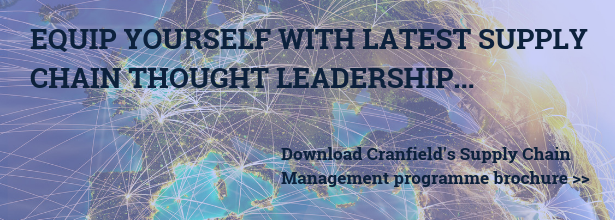/Digitalisation%20mean%20integration%20or%20disintegration%20Blog%20Image%20July%202019.jpg?width=615&name=Digitalisation%20mean%20integration%20or%20disintegration%20Blog%20Image%20July%202019.jpg)
Certainly Supply Chain 4.0 is going to make the numbers sparkle. Nike’s plans to move to a model that cuts lead times from 60 to 10 days are a good example: installing 1200 new automated machines and a move to nearshoring will mean big reductions in shipping expenses, import duties and the risks of over-production, as well as 30% fewer steps in the process.
“To make this shift, we're digitising our end-to-end supply chain and creating a model with shorter lead times to deliver what consumers want, when they want it, where they want it,” says Nike COO Erik Spunk.
But the 4.0 approach also means 50% less labour. In an operation the size of Nike, with around one million workers in 566 factories, that means 500,000 people losing their jobs. What does this look like and feel like for the remaining management, employees and communities where operations are located? There’s no pain-free separation between the old and new ways of running supply chains. Technologies like autonomous systems and additive manufacturing can’t simply be plugged into vacant spaces. It’s a messy, people-filled environment that means a tangle for technology in terms of implications for corporate strategy, risks and reputation.
Integrating
The systems all come as a combination, a system with widespread effects: a warehouse with vision picking, the robots working alongside staff and managers; data being constantly monitored and analysed as a basis for decision-making; simulations used for anticipating risks; sensors and the Internet of Things, the option of 3D printing for just-in-time supplies. And they all impact on people, information systems and strategy.
Because ultimately a Supply Chain is just that: groups of people (suppliers, operations managers and customers) who come together across functions to produce, deliver and service a product. Introducing whole packages of new technology opens up important issues for how the businesses involved continue to align their operations with their core values and purpose. Is it the same kind of operation, do people relate to each other the same way and have the same sense of identification and motivation, when the bulk of their colleagues are AI systems?
Dis-integrating
Leaders and managers in the Supply Chain need to be able to set out the new vision of integration, the co-existence of people and 4.0 technology, and how it’s going to work in practice. They will only be able to do this, first of all, by being consistently mindful of the bigger picture. We’re entering a period of transition that’s inevitably going to be difficult in terms of lost livelihoods, in the re-making and re-positioning of people’s roles, and good management is needed more than ever.
Rather than thinking just in terms of the numbers to impress the board, there needs to be more planning: small pilots to test the impact of tech, more consultation over developments and more attention to the full extent of 4.0 implications across an organisation, what it means for the organisation’s own ‘society’ and how it’s perceived by customers and communities outside. There’s the danger of dis-integration between people and tech, mistakes and misunderstandings that will be more costly than falling behind with 4.0. We need people-enhanced digital just as much as digitally-enhanced people; augmented intelligence not just artificial intelligence.
Our work in this area is critical to professionalising the supply chain profession and is one of the key themes explored within the Cranfield's Supply Chain Management programme enabling and optimising your effectiveness to leverage transformative technologies into your operations and develop appropriate skills for next generation professionals.
Blog produced by: Richard Wilding OBE, Professor of Supply Chain Strategy and Programme Director of the Supply Chain Management Programme, Cranfield School of Management.
Read more:


/Digitalisation%20mean%20integration%20or%20disintegration%20Blog%20Image%20July%202019.jpg)

